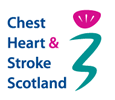Now use the self assessment table below to assess yourself against the current amount, intensity and type of exercise that is recommended.
| What are you currently doing in terms of physical activity? | Are you meeting the recommended guidance | |
|---|---|---|
| Frequency | How many days in the week are you physically active? | You should aim to be active five days in the week. |
| Time | How long are you physically active for each day? | You should aim for 150 minutes a week which can be achieved by 30 minutes each day over five days. It can be done in sessions of 10 minutes three times a day or two 15 minute sessions. |
| Type | What type of exercises should you do ? | Try to do some of each type below for stamina, strength and suppleness. |
| Improve your stamina | You should aim to do exercise that works your whole body which will improve your stamina. | |
| Build strength | You should also do some exercise that helps build strength. You can do this by using weights. You can use light weights to start with and you do not need to buy expensive weights, for example fill milk cartons with water or make your own bean bags using carrier bags. | |
| Help keep you supple | Don’t forget you also need to do some stretches that help keep you supple. | |
Why not set yourself a goal around physical activity. Think about the do-able steps you will need to take to help you reach your goal and achieve the above recommendations. If you need advice or you are not sure of the facilities in your area ask your GP, practice nurse for an exercise plan to suit you or check if your leisure centre has any classes to suit your needs. You can also do your exercises at home or around your local area.
Walking is one of the easiest and most flexible forms of free exercise. You can walk at your own pace and gradually build up distance, time or speed. You can walk with a friend, join a walking group or walk on your own. Your walks can be in various locations depending on the weather. You can walk indoors or outdoors. You can stop and rest at any time.





